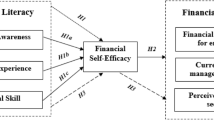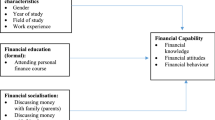Abstract
Many universities in Germany and other countries have introduced financial (or commercial) accounting to manage effectively their finances. It aligns with so-called new public sector management reforms worldwide. In this paper we analyze whether the components of this type of financial accounting reform suit the nature and objectives of German public universities. While the analysis mainly relates to the German situation, there are likely to be implications for public universities universally. Drawing on an analysis of the reports of two well known German-speaking universities, Heidelberg and Vienna, we analyze whether the components of the new financial accounting reforms suit the nature and objectives of those public universities. While we argue that cash-flow statements and balance sheets remain important, it is shown that it is necessary for state-run educational institutions to change several key elements of traditional commercial accounting. Because the success goals of such universities are non-profit-oriented, their financial accounting should be augmented by a ‘change in value statement’, replacing the traditional income statement. As their valuation cannot be correlated with the definition of profit in (German) public universities this term is suggested. By change in value we mean specifically that assets may experience a total loss or a decrease in value. In management accounting output measures and performance indicators should substitute revenues as the counterpart of costs. Furthermore, long-term financial decisions play a crucial role in universities. Therefore, a form of investment accounting is very important for them. The conventional form has to be modified by ‘investment statements’ and ‘knowledge balances’ of their intellectual capital. In this paper we also show how the concept of a balanced scorecard can be applied to public universities and how specific accounting instruments can be integrated into it.














Similar content being viewed by others
References
Agasisti T, Arnaboldi M, Azzone G (2008) Strategic management accounting in universities: the Italian experience. High Educ 55:1–15
Albach H (2000) Zu neuen Entwicklungen in der Hochschul-Kostenrechnung. In: Albach H, Mertens P (eds) Hochschulorganisation und Hochschuldidaktik, ZfB Ergänzungsheft 3/2000, pp 219–223
Angermann A, Blechschmidt U (1972) Hochschulkostenrechnung, Weinheim
BayHschG (2006) Bayerisches Hochschulgesetz (BayHSchG) vom 23. Mai 2006
Cameron J, Guthrie J (1993) External annual reporting by an Australian university: changing patterns. Financial Account Manage 9:1–15
Christiaens J, Wielemaker ED (2003) Financial accounting reform in Flemish universities: an empirical study of the implementation. Financial Account Manage 19:185–204
Demski JS (2002) Management accounting. In: Küpper H-U, Wagenhofer A (eds) Handwörterbuch Unternehmensrechnung und Controlling, 4th edn. Schäffer-Poeschel, Stuttgart, pp 66–81
Demski JS, Feltham GA (1976) Cost determination: a conceptual approach. The Iowa State University Press, Ames Iowa
Dixon K, Coy D, Tower G (1991) External reporting by New Zealand universities 1985–1989: improving accountability. Financial Account Manage 7:159–178
Edvinsson L, Malone MS (1997) Intellectual capital: realizing your company’s true value by finding its hidden brainpower. HarperCollins, New York
Ewert R, Wagenhofer A (2008) Interne Unternehmensrechnung, 7th edn. Heidelberg, New York, Berlin 2008
Fandel G and Pfaff A (2000) Eine produktionstheoretisch fundierte Kostenrechnung für Hochschulen. In: Albach H, Mertens P (eds) Hochschulorganisation und Hochschuldidaktik, ZfB Ergänzungsheft 3/2000, pp 191–204
Heise S (2001) Hochschulkostenrechnung. Forschung durch Entwicklung ausgehend vom Projekt der Fachhochschule Bochum. Diss., Köln
Hessen H (2010) Hessisches Hochschulgesetz vom 16.12.2009
Hochschulrechnungswesen AK (1999) Arbeitskreis Hochschulrechnungswesen der deutschen Universitätskanzler: Schlußbericht. www.tu-muenchen.de/campus/about/reform/akhsr/data/endfassung_sS.pdf
Hofmann YE (2008) Steuerung durch Transparenz. Die Rolle transparenzinduzierter Emotionen bei der Realisierung von Koordinations- und Motivationswirkungen, Stuttgart
Kaplan RS, Norton DP (1996) The balanced scorecard: translating strategy into action. Harvard Business School Press, Boston
Karathanos D, Karathanos P (2005) Applying the balanced scorecard to education. J Educ Bus 80:222–230
Kronthaler L (1999) Greifswalder Grundsätze. Weshalb Hochschulen ein modernes Rechnungswesen brauchen. Forschung Lehre, 583–584
Krützfeld T (2007) Das kaufmännische Rechnungswesen der Universität Heidelberg. In: Küpper H-U (ed) Hochschulrechnung und Hochschulcontrolling, Zeitschrift für Betriebswirtschaft Special Issue 5/2007, pp 59–81
Küpper H-U (2000) Hochschulrechnung auf der Basis von doppelter Buchführung und HGB? Zeitschrift für betriebswirtschaftliche Forschung 52:348–369
Küpper H-U (2001) Rechnungslegung für Hochschulen. Betriebswirtschaftliche Forschung und Praxis, 578–592
Küpper H-U (2002) Konzeption einer Perioden-Erfolgsrechnung für Hochschulen. Zeitschrift für Betriebswirtschaft 72:929–951
Küpper H-U (2008) Controlling—Konzeption, Aufgaben und Instrumente, 5th edn. Schäffer-Poeschel, Stuttgart
Küpper H-U (2009) Investment-based cost accounting as a fundamental basis of decision-oriented management accounting. ABACUS 45:249–274
Monsen N (2002) The case for cameral accounting. Financial Account Manage 18:39–72
Monsen N, Näsi S (1998) The contingency model of governmental accounting innovations: a discussion. Eur Account Rev 7:275–288
Mühlhaupt L (1987) Theorie und Praxis des öffentlichen Rechnungswesens in der Bundesrepublik Deutschland. Nomos Verlagsgesellschaft, Baden-Baden
Nayeri MD, Mashhadi MM, Mohajeri K (2007) Universities strategic evaluation using balanced scorecard. Int J Soc Sci 2:231–236
NHG (2007) Niedersächsisches Hochschulgesetz (NHG) vom 26.2.2007
Oettle K (1990) Non-profit organisations. In: Gaugler E et al (eds) Handbook of German Business Management, Stuttgart, pp 1513–1520
Papenhausen C, Einstein W (2006) Insights from the balanced scorecard: implementing the balanced scorecard at a college of business. Meas Bus Excell 10:15–22
Roos J, Roos G, Edvinsson L, Dragonetti NC (1997) Intellectual capital. MaCmillan Press Ltd., London
Schmücker S (2011) Universitätsprofile—Konzeption. Komponenten sowie empirische Umsetzung an deutschen Universitäten, München 2011
Schneider D (1997) Betriebswirtschaftslehre, Band 2: Rechnungswesen, 2nd edn. München, Wien
Schweitzer M, Hettich GO (1981) Entwicklung des Systems einer Kostenarten- und Kostenstellenrechnung an Hochschulen, unveröffentlichter Schlußbericht zum BLK-Modellversuch
Schweitzer M, Küpper H-U (2011) Systeme der Kosten- und Erlösrechnung, 10th edn. Schäffer-Poeschel, Stuttgart
Umashankar V, Dutta K (2007) Balanced scorecards in managing higher education institutions: an Indian perspective. Int J Educ Manage 21:54–67
Universität Heidelberg (2010a) Jahresbericht 2010. http://www.uni-heidelberg.de/md/zentral/einrichtungen/rektorat/jahresbericht_2010.pdf
Universität Heidelberg (2010b) Jahresabschluss 2010. http://www.uni-heidelberg.de/md/zentral/einrichtungen/rektorat/jahresbericht_2010.pdf
Universität Wien (2010) Leistungsbericht und Wissensbilanz. http://www.medienportal.univie.ac.at/-fileadmin/user.../Leistungsbericht_2010.pdf
Waltenberger M (2006) Rechnungslegung staatlicher Hochschulen: Prinzipien, Struktur und Gestaltungsprobleme, München
Weichselbaumer J (2007) Hochschulinterne Steuerung über Zielvereinbarungen - ein prozessbegleitender ökonomisch-methodischer Ansatz an der TU München. In: Küpper H-U (ed) Hochschulrechnung und Hochschulcontrolling, Zeitschrift für Betriebswirtschaft Special Issue 5/2007, pp 157–171
WIBERA (1972) Kostenrechnung in Hochschulen. Gutachten der Wibera Wirtschaftsberatungs AG im Auftrag des Ministers für Wissenschaft und Forschung des Landes Nordrhein-Westfalen 1972
Wiig KM (1997) Integrating intellectual capital and knowledge management. Long Range Plan 30:399–405
Wirtschaftsuniversität Wien (2011) Wissensbilanz. www.wu.ac.at/structure/about/-publications/wissensbilanz
Wüstemann G, Brixner HC (2001) Hochschul-Programmhaushalt in Hessen. Das Hochschulwesen, 6/2000 171-175 and 1/2001 2-7
Wysocki KV (1965) Kameralistisches Rechnungswesen. C.E. Poeschel Verlag, Stuttgart
Author information
Authors and Affiliations
Corresponding author
Rights and permissions
About this article
Cite this article
Küpper, HU. A specific accounting approach for public universities. J Bus Econ 83, 805–829 (2013). https://doi.org/10.1007/s11573-013-0682-4
Published:
Issue Date:
DOI: https://doi.org/10.1007/s11573-013-0682-4




